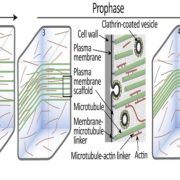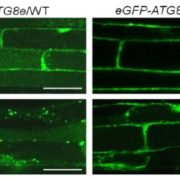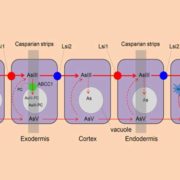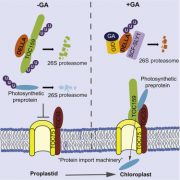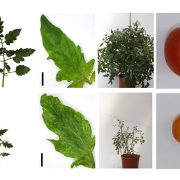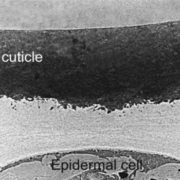Apoplastic pH acts as a chemical switch in plants by modulating H2O2 redox potential
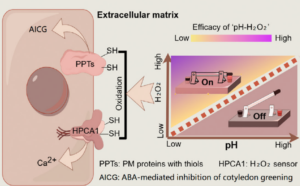 Environmental stimuli, such as drought and salinity, alter cellular conditions including apoplastic pH (pHApo) in plants. These stimuli often lead to an elevation in pHApo which is closely associated with cell functions and plant growth. However, the mechanism behind is largely unexplored. A recent study suggests that pHApo acts as a chemical switch, regulating signalling and modulating stress responses. Using Arabidopsis as the model, Zhou et al. tested the effect of abscisic acid (ABA) on cotyledon greening inhibition under different pHApo. ABA inhibits cotyledon greening by inducing apoplastic H2O2 production. Disrupting apoplastic H2O2 production alleviates the inhibition, and the elevation of pHApo mimics this effect. One might assume that pHApo elevation inhibits apoplastic H2O2 production, but the study reveals a different mechanism: instead of affecting H2O2 levels, increased pHApo lowers the redox potential. Since H2O2 oxidizes cysteine thiols of plasma membrane proteins to transduce stress signals, the lowered redox potential weakens this signal transduction, ultimately leading to stress alleviation. Using the plasma membrane-anchoring calcium signal regulator HPCA1 as an example, the authors showed that elevated pHApo weakened the H2O2-induced oxidation of HPCA1, thereby diminishing calcium signalling, and decreasing the plant sensitivity to H2O2 treatment. The study provides mechanistic insights into pHApo-mediated stress alleviation and highlights the potential to modulate stress responses by manipulating the chemical properties of signalling molecules. (Summary by Yee-Shan Ku @YeeShanKu1) New Phytol. 10.1111/nph.20400
Environmental stimuli, such as drought and salinity, alter cellular conditions including apoplastic pH (pHApo) in plants. These stimuli often lead to an elevation in pHApo which is closely associated with cell functions and plant growth. However, the mechanism behind is largely unexplored. A recent study suggests that pHApo acts as a chemical switch, regulating signalling and modulating stress responses. Using Arabidopsis as the model, Zhou et al. tested the effect of abscisic acid (ABA) on cotyledon greening inhibition under different pHApo. ABA inhibits cotyledon greening by inducing apoplastic H2O2 production. Disrupting apoplastic H2O2 production alleviates the inhibition, and the elevation of pHApo mimics this effect. One might assume that pHApo elevation inhibits apoplastic H2O2 production, but the study reveals a different mechanism: instead of affecting H2O2 levels, increased pHApo lowers the redox potential. Since H2O2 oxidizes cysteine thiols of plasma membrane proteins to transduce stress signals, the lowered redox potential weakens this signal transduction, ultimately leading to stress alleviation. Using the plasma membrane-anchoring calcium signal regulator HPCA1 as an example, the authors showed that elevated pHApo weakened the H2O2-induced oxidation of HPCA1, thereby diminishing calcium signalling, and decreasing the plant sensitivity to H2O2 treatment. The study provides mechanistic insights into pHApo-mediated stress alleviation and highlights the potential to modulate stress responses by manipulating the chemical properties of signalling molecules. (Summary by Yee-Shan Ku @YeeShanKu1) New Phytol. 10.1111/nph.20400


